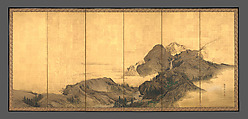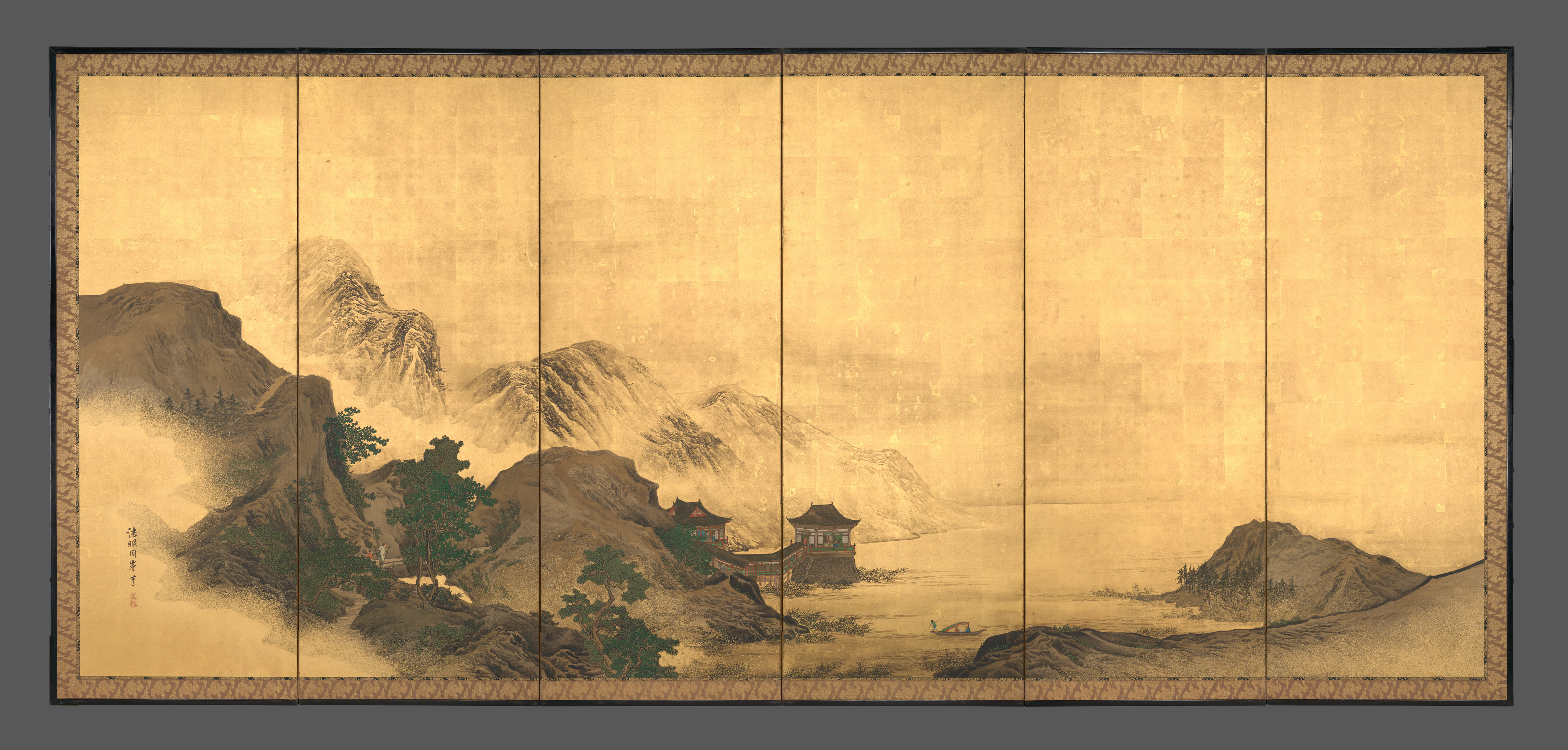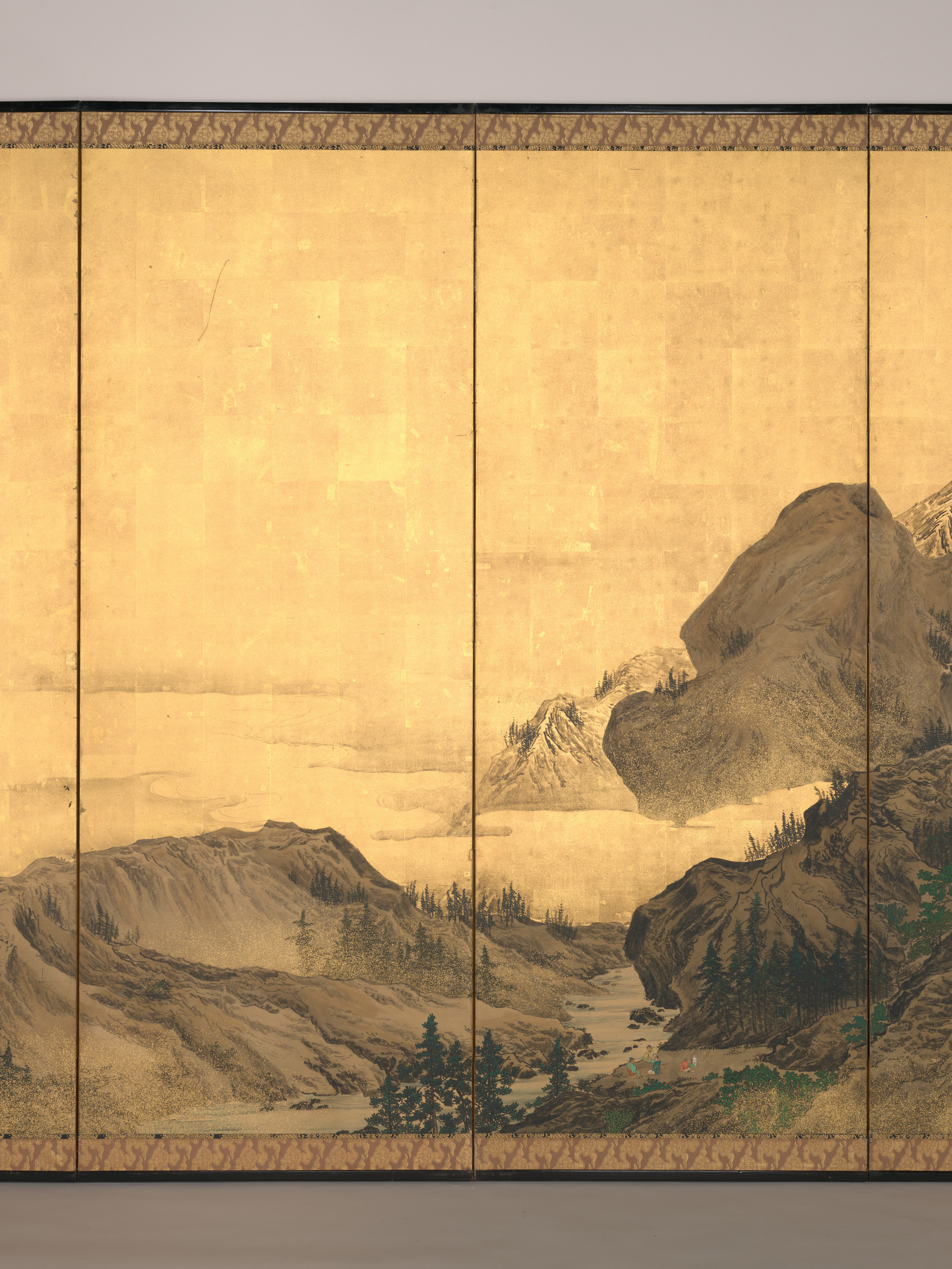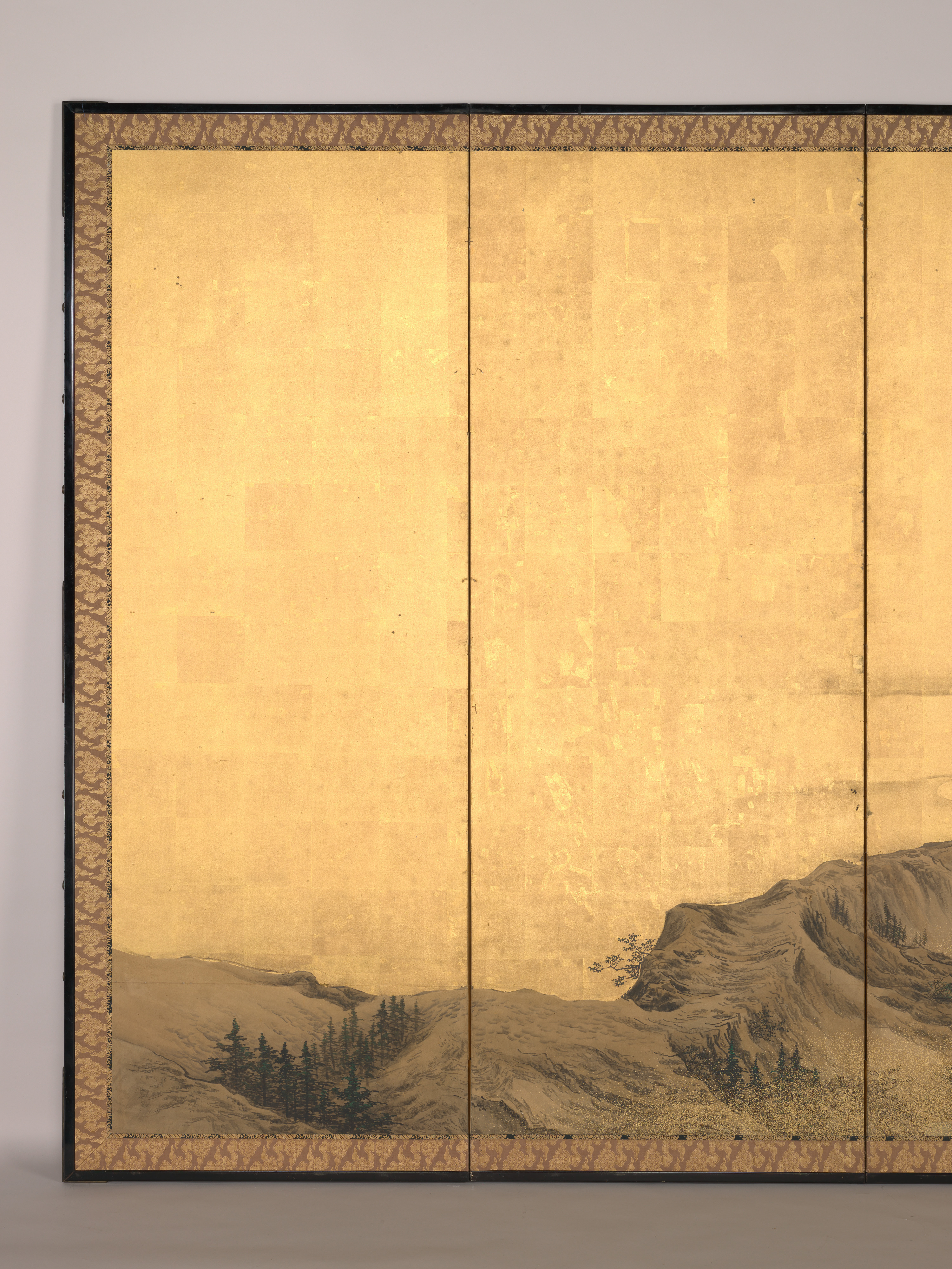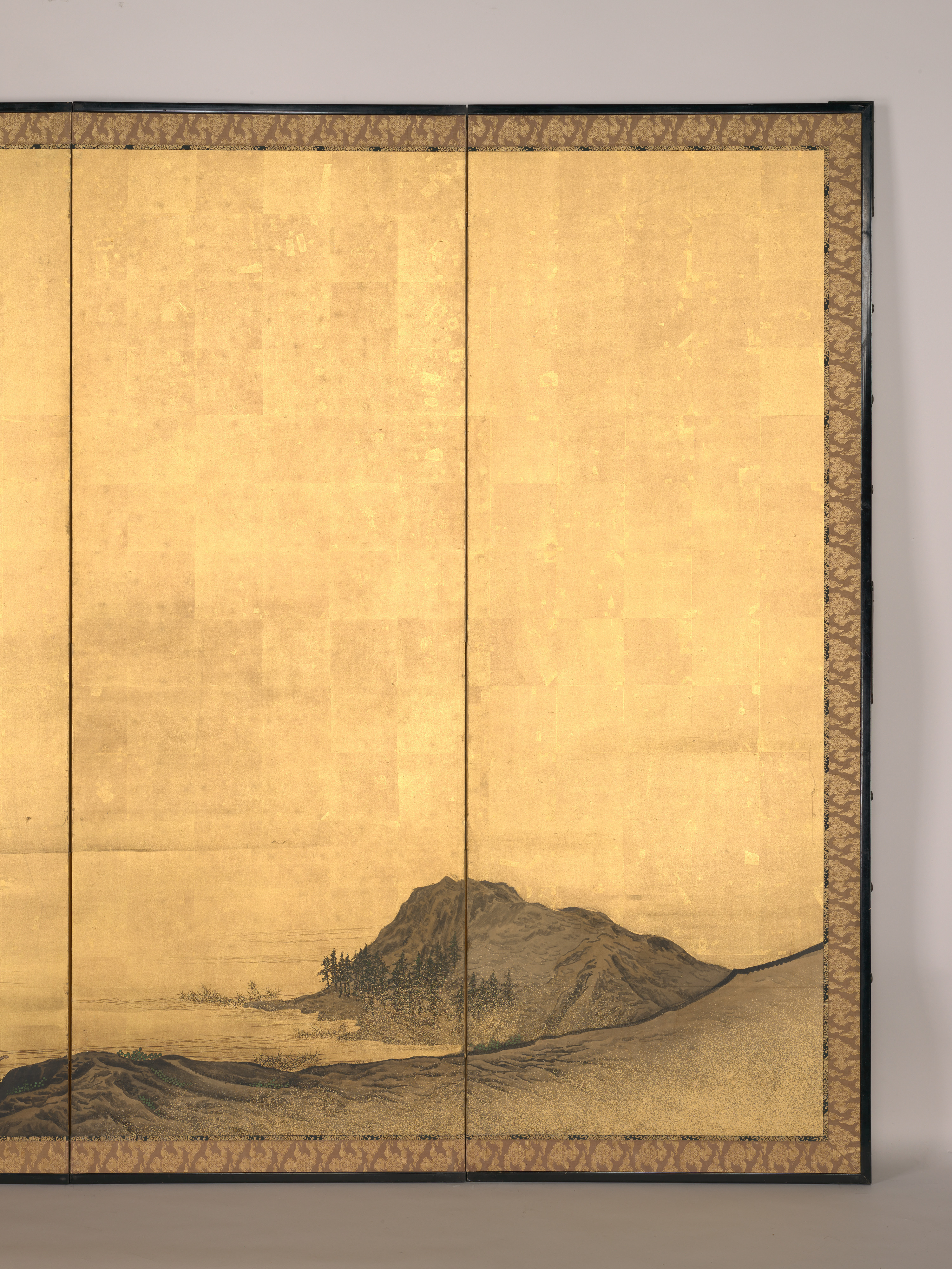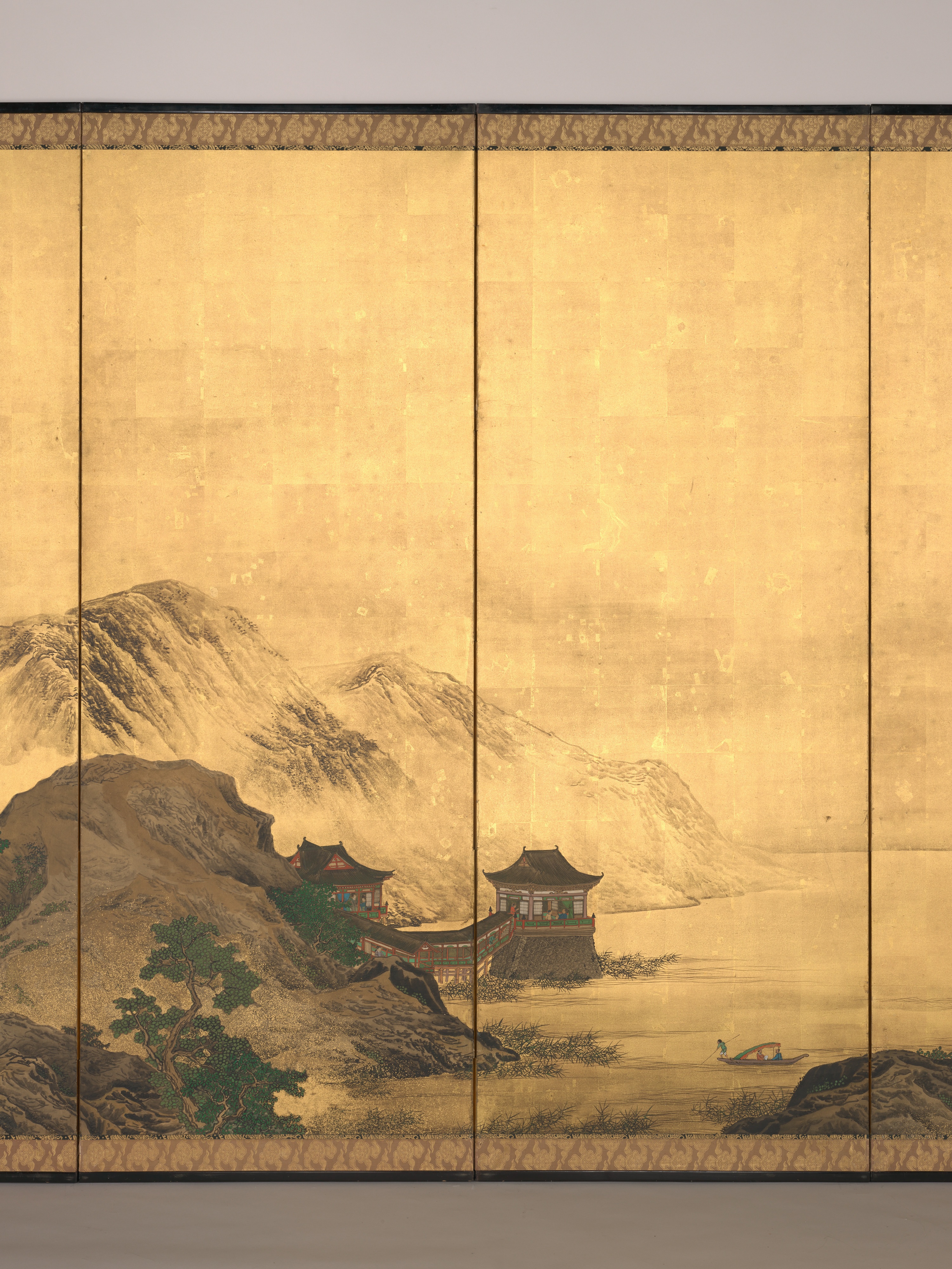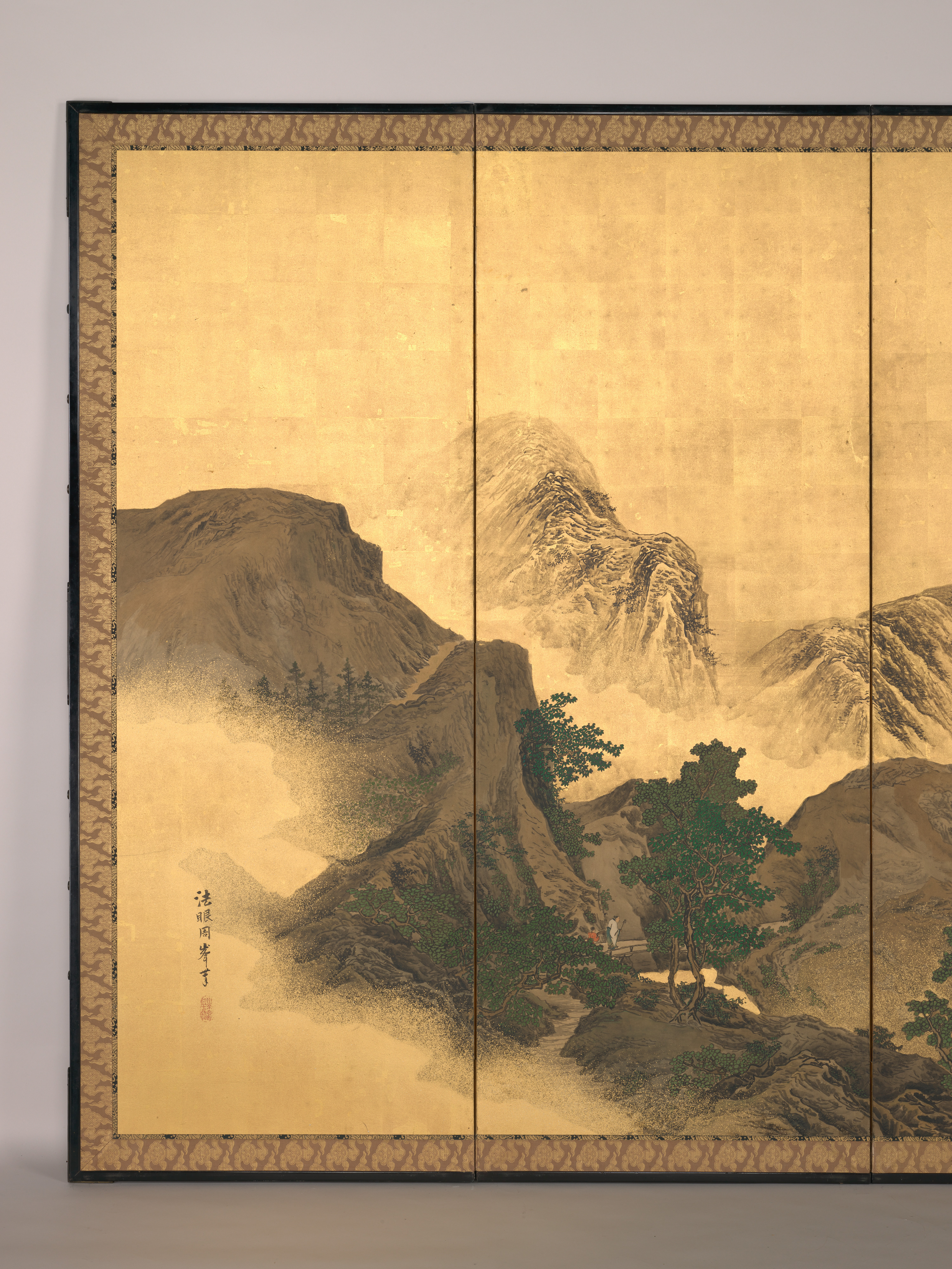Landscape with Pavilion
Mori Shūhō Japanese
Not on view
This pair of screens depicts an imaginary scene in China, with a waterfall and lake set among craggy mountains. On the right screen, three Chinese gentlemen-scholars enjoy tea. The left screen features a sumptuous mansion with covered corridors; a pavilion stands atop stone masonry. Scholars sit within the pavilion, while the lady of the house and two maidservants can be seen in other parts of the building. More scholars approach the house on foot and by boat.
The artist, Mori Shūhō, was the elder brother of the better-known Mori Sosen (1747–1821), a renowned painter of monkeys. Shūhō incorporated the orthodox Kano style of painting (evident in the linear brush technique) with newly learned Western elements like the low-lying foreground, which creates a strong sense of distance. Such divergent features forecast the complex developments that were to characterize artistic movements of the nineteenth century immediately following Shūhō’s death.
Due to rights restrictions, this image cannot be enlarged, viewed at full screen, or downloaded.
This artwork is meant to be viewed from right to left. Scroll left to view more.
